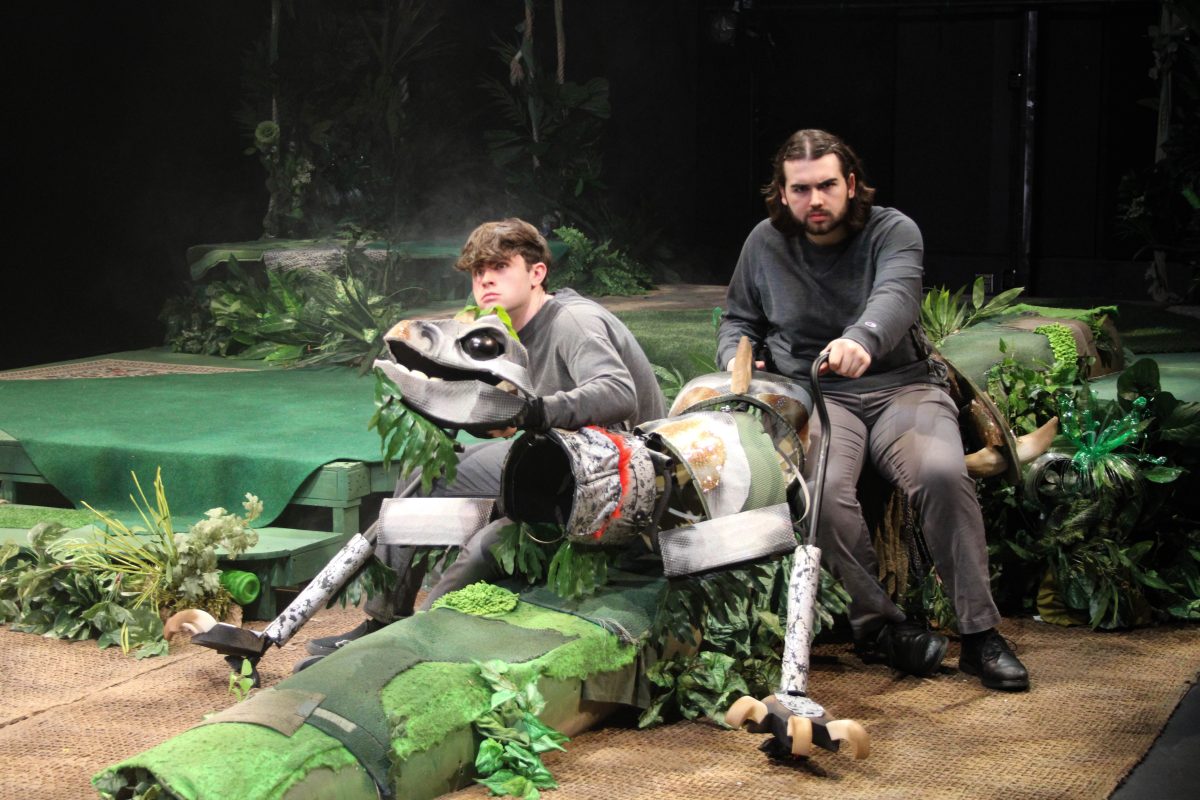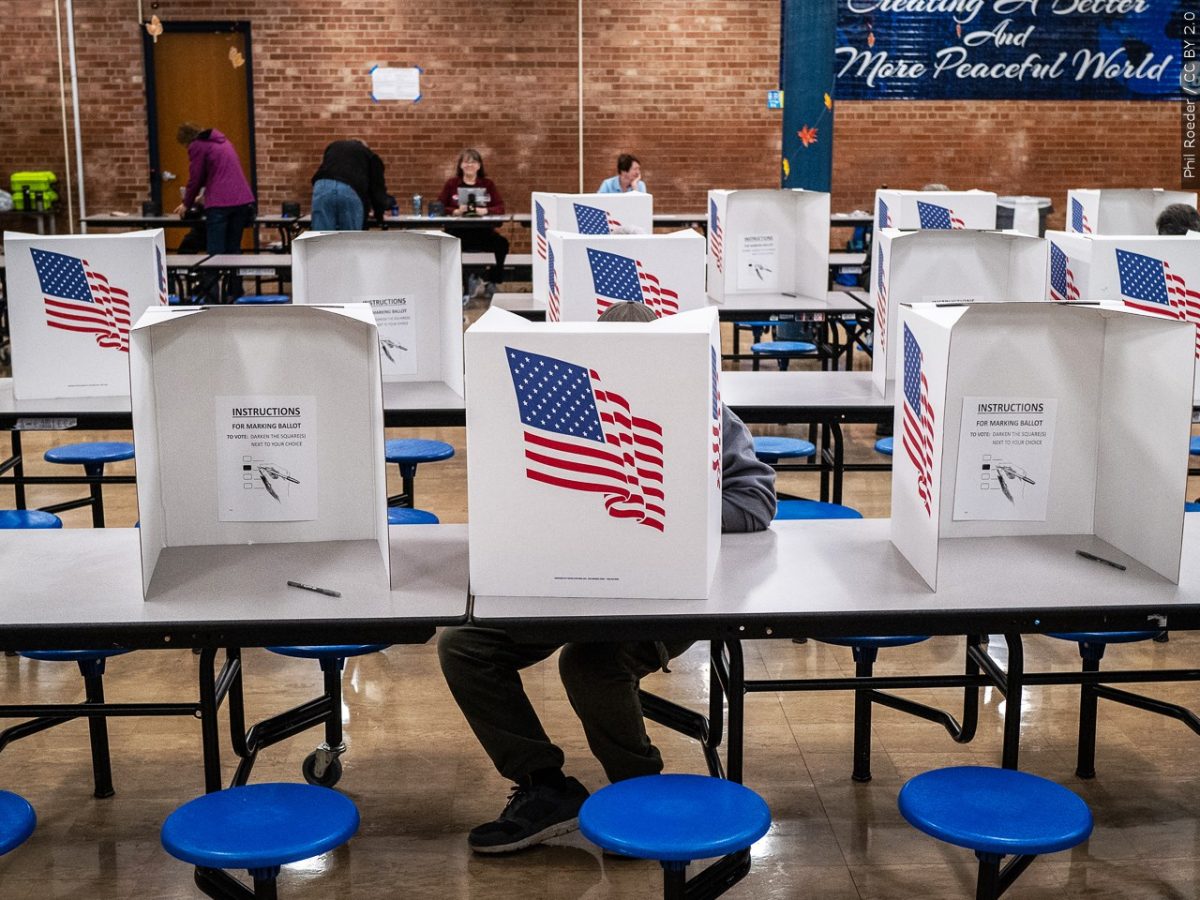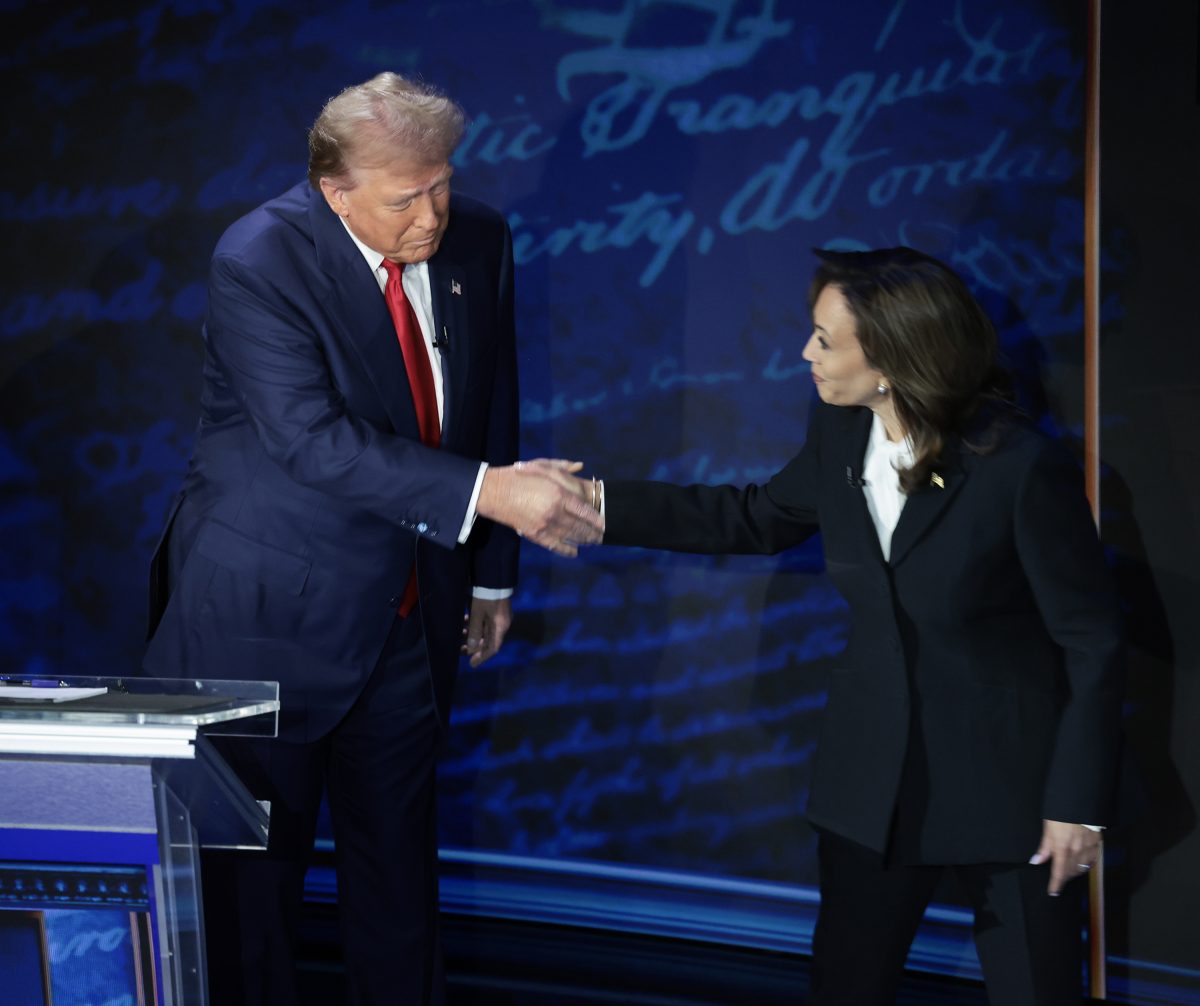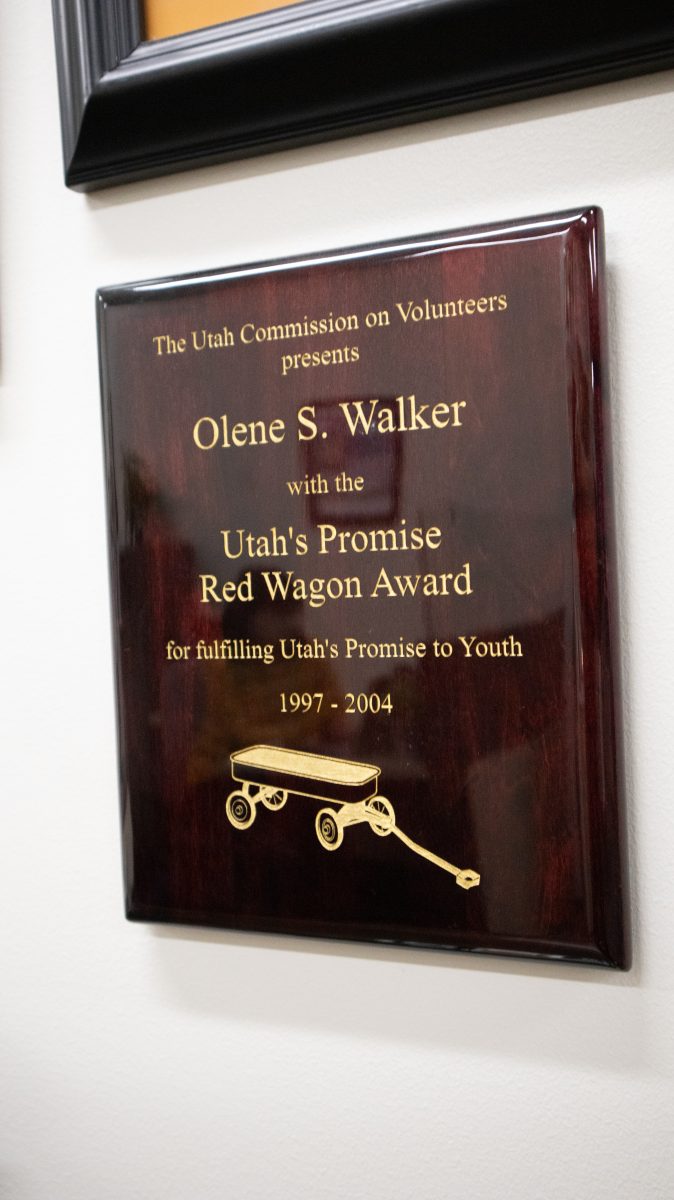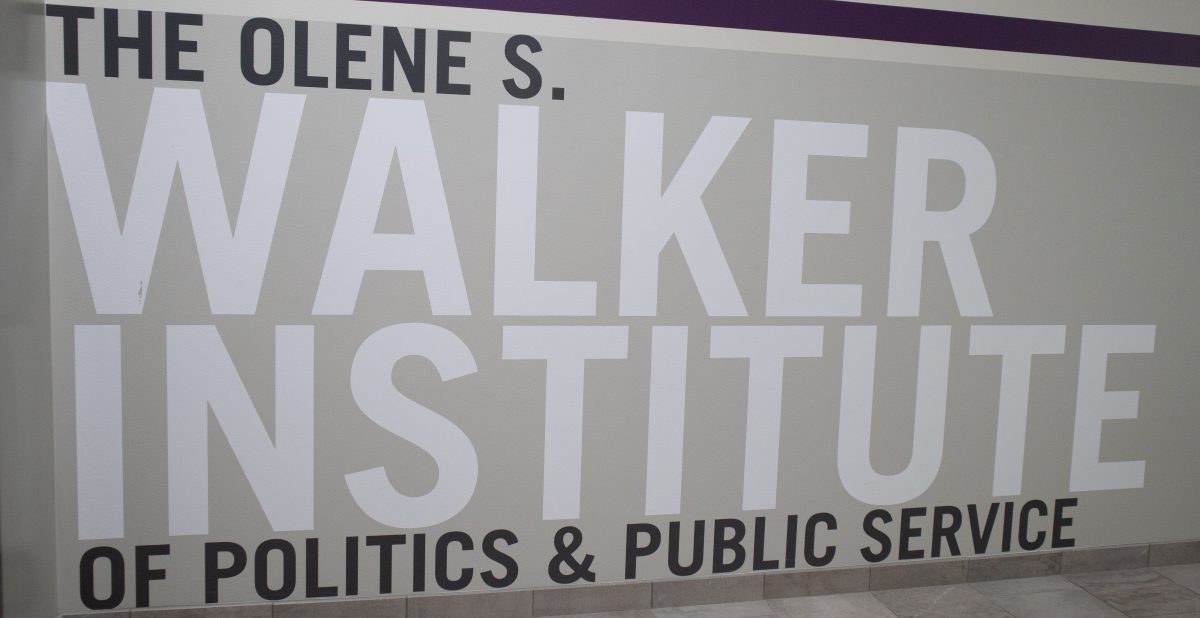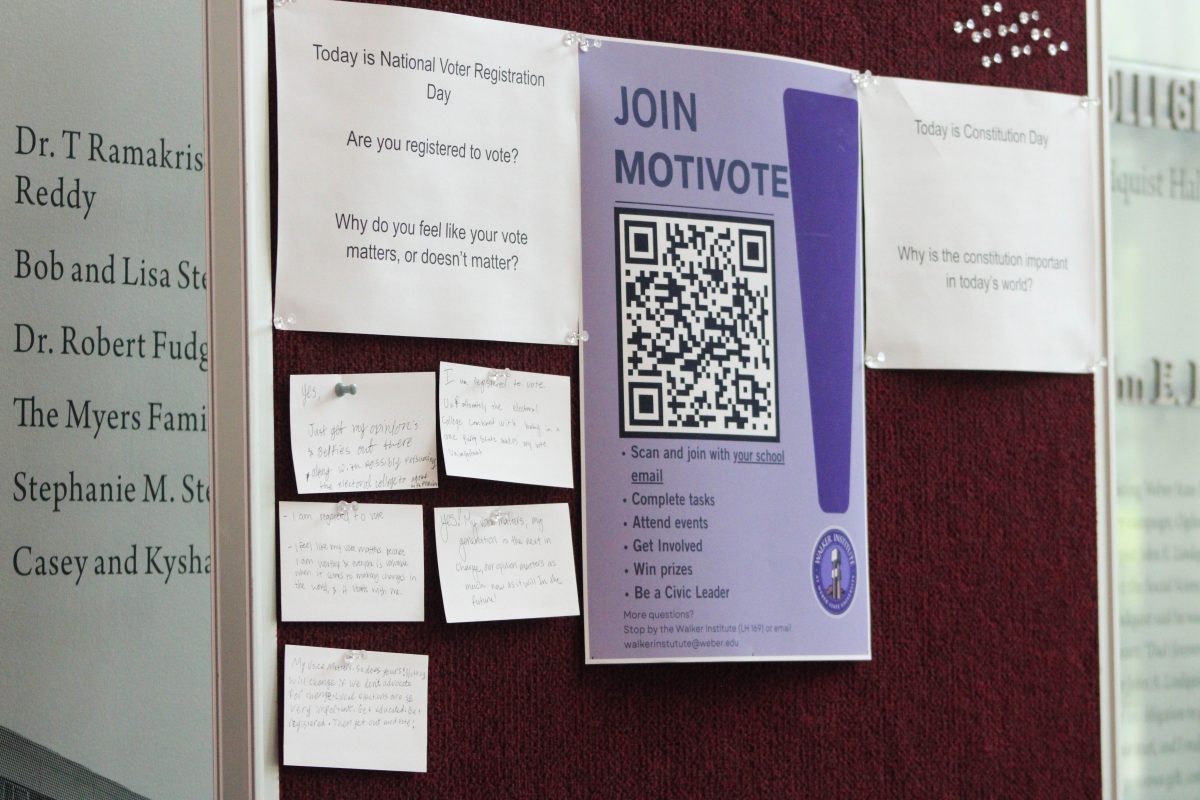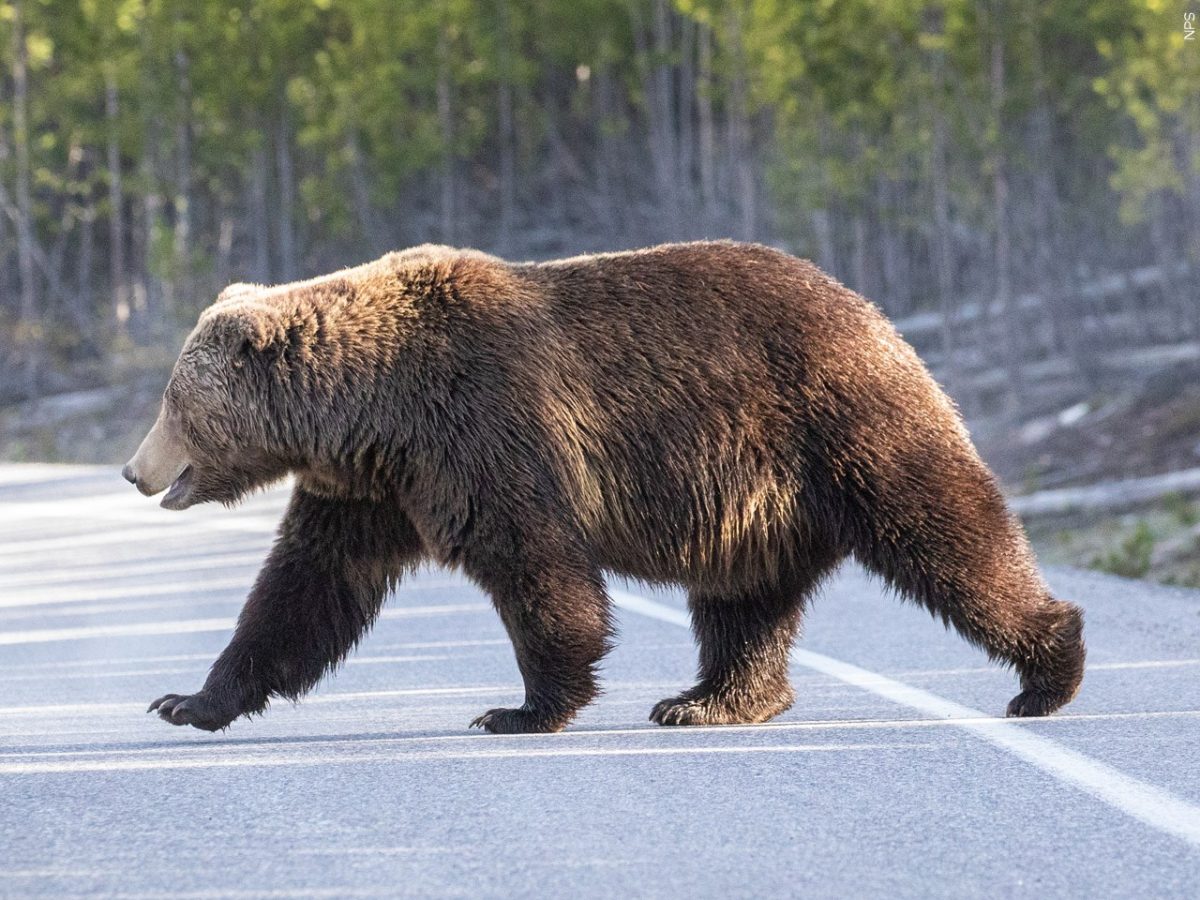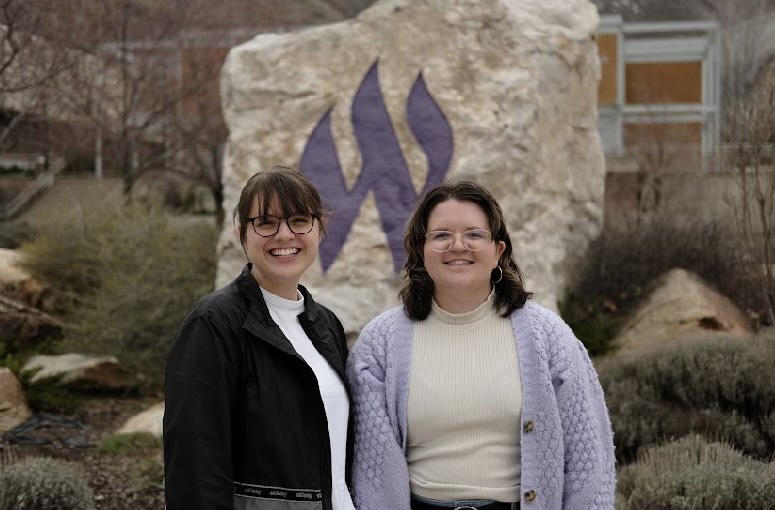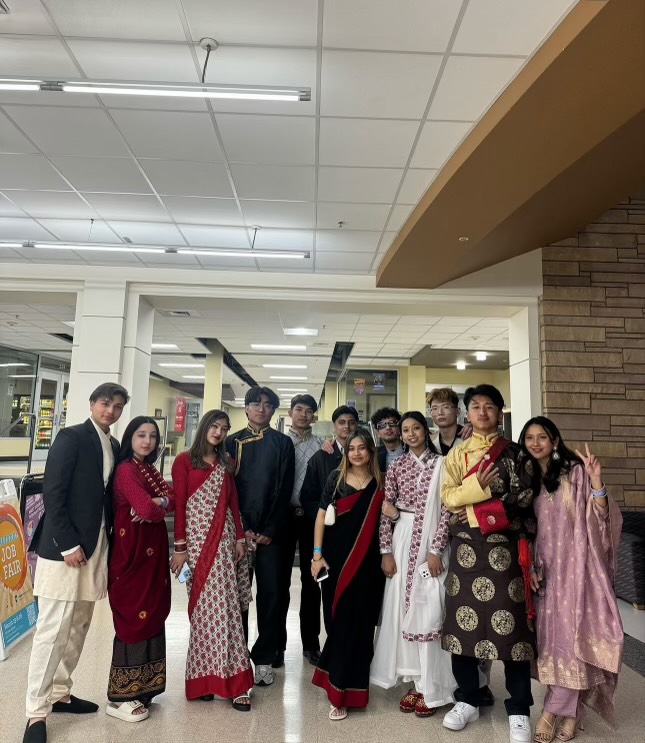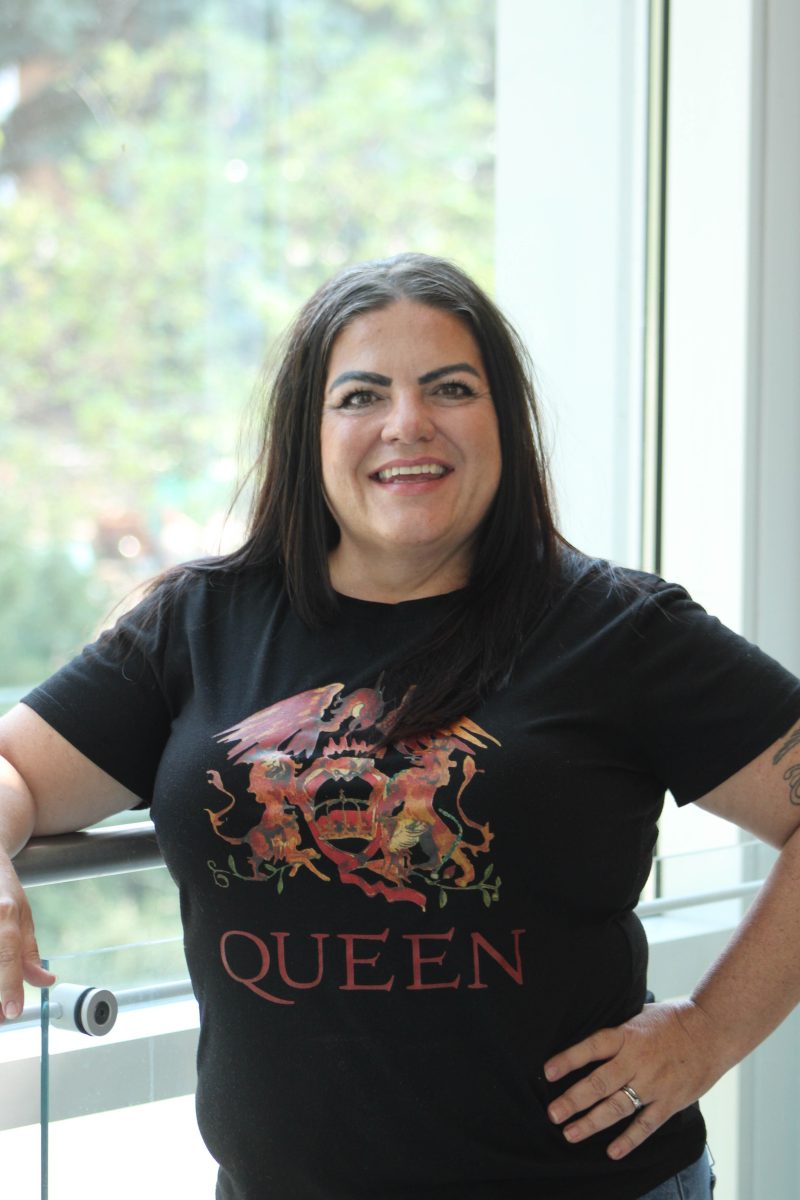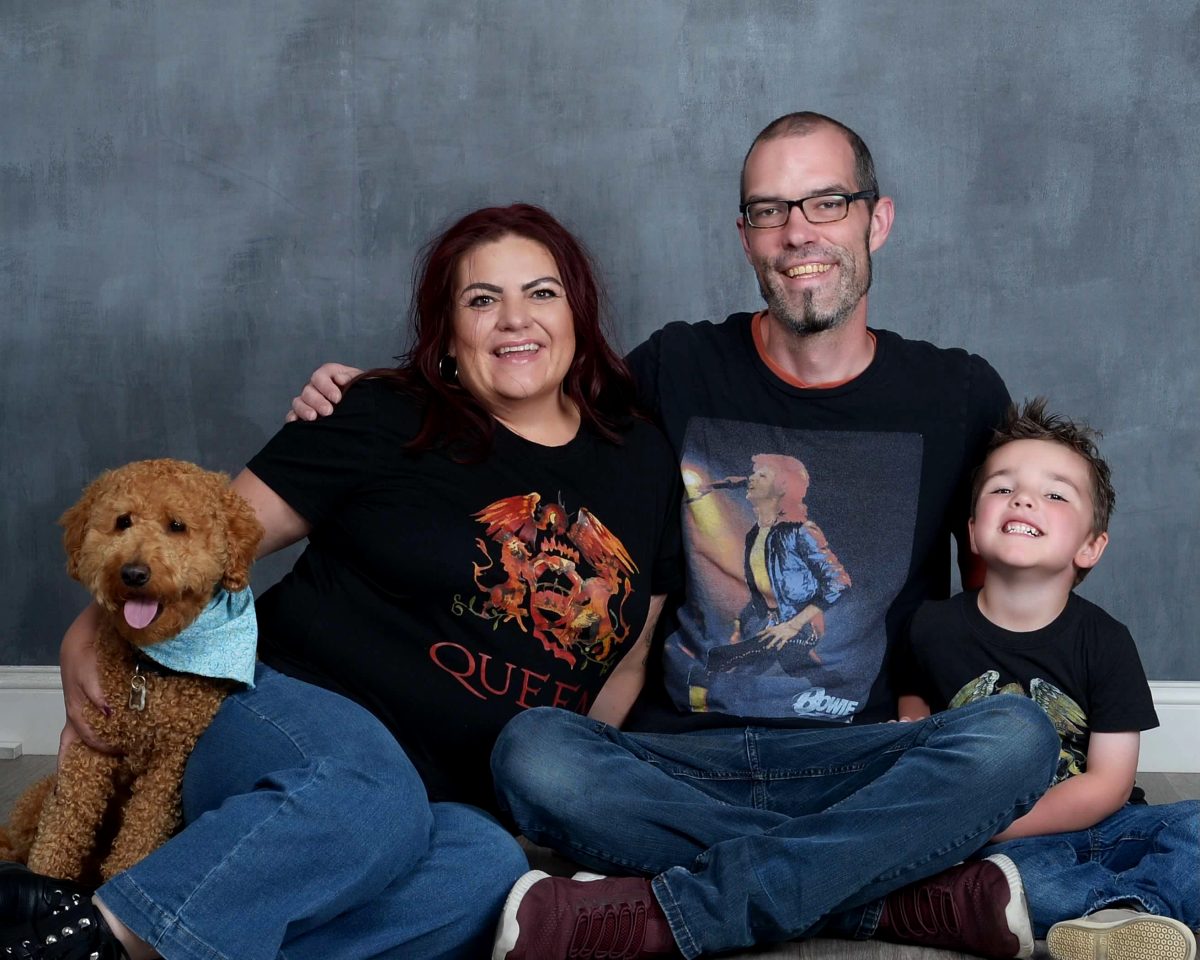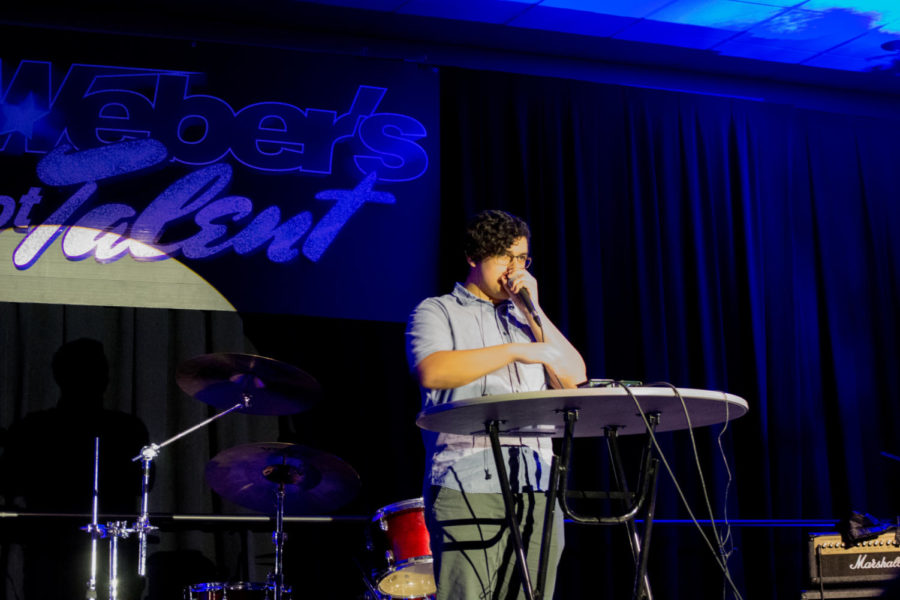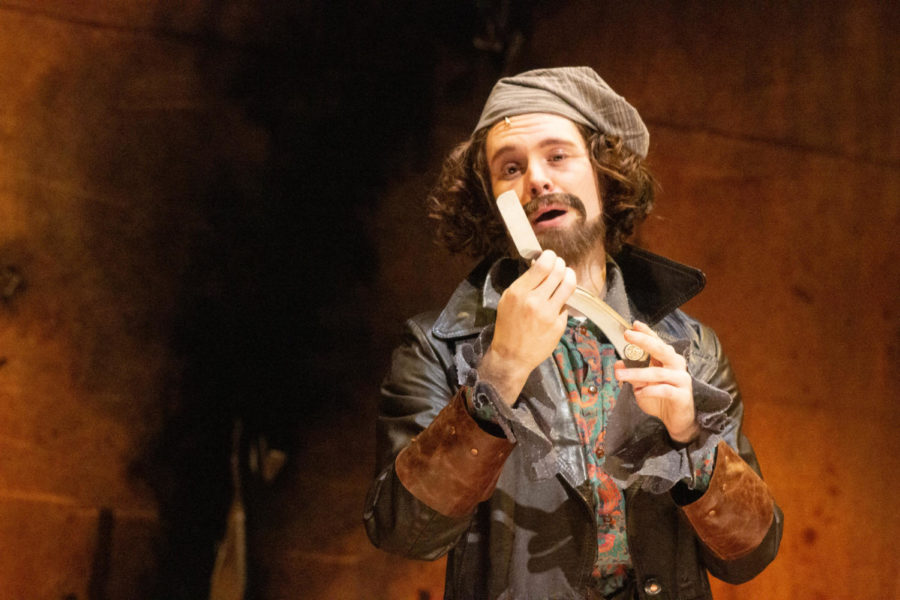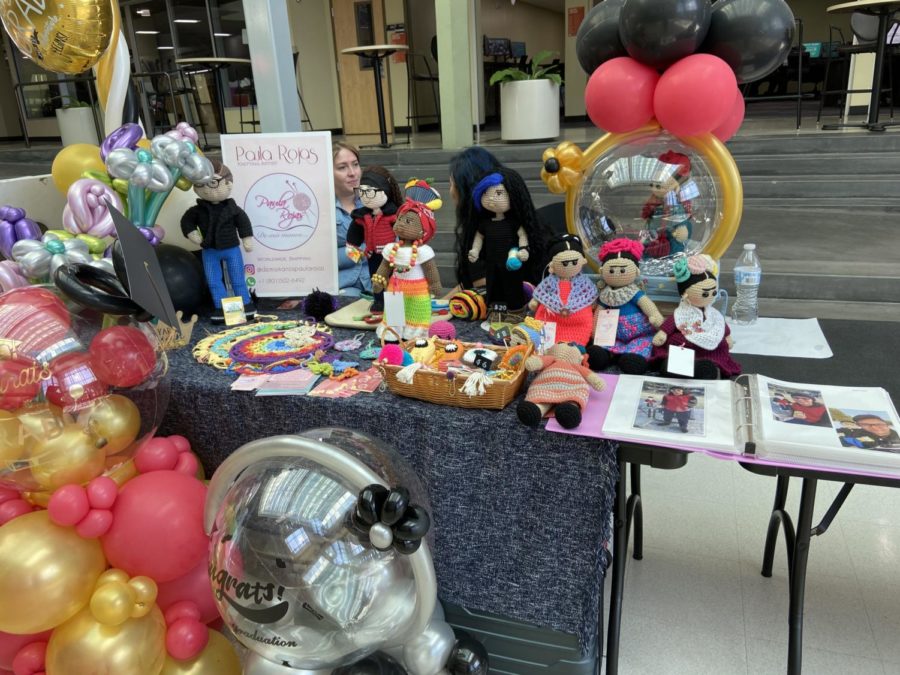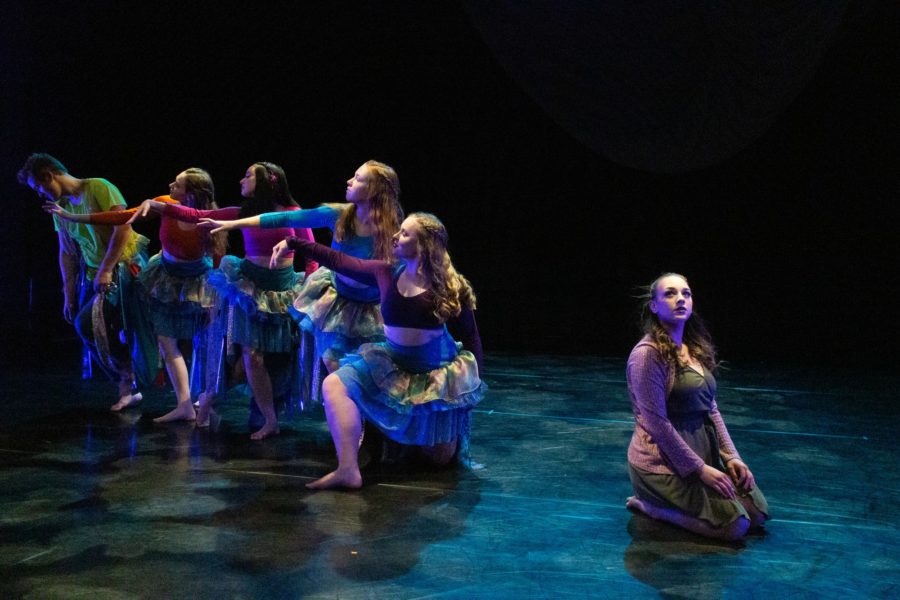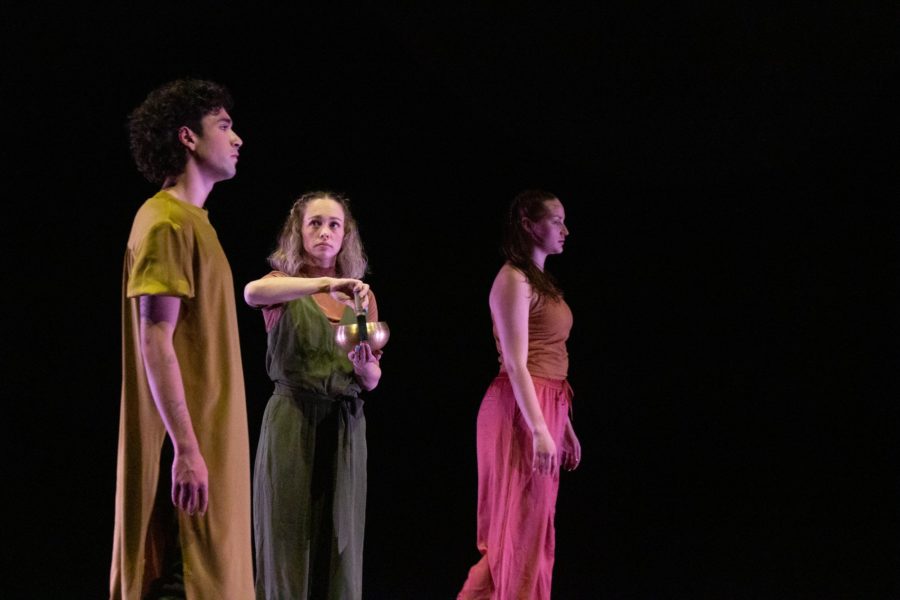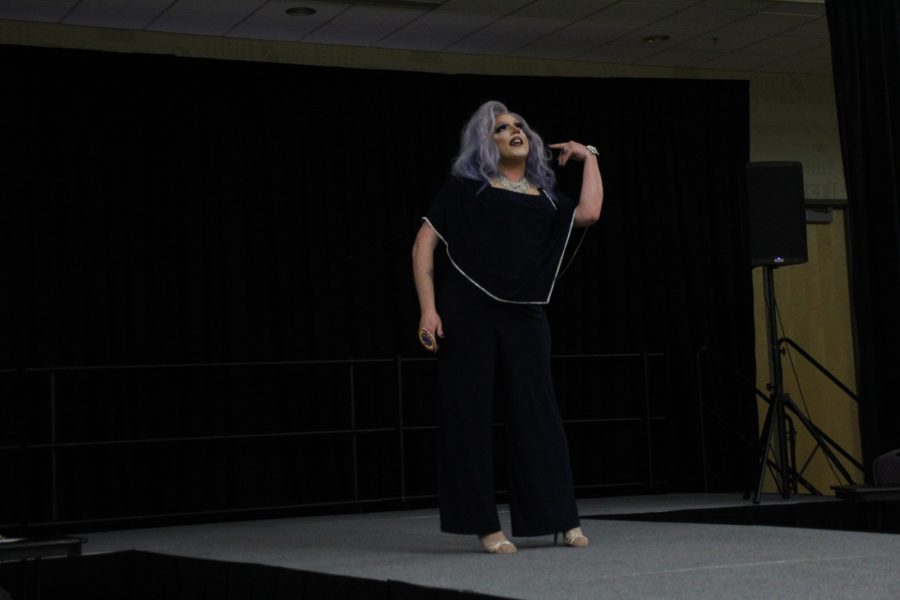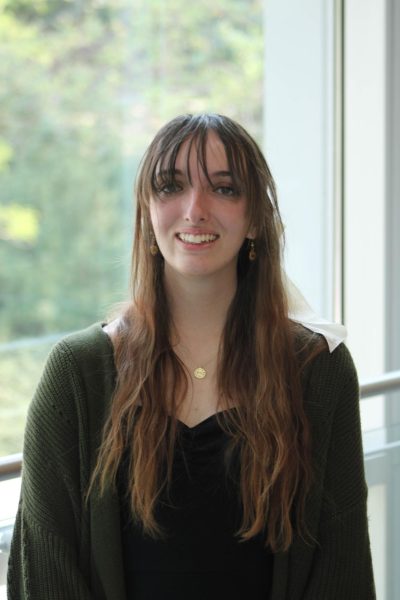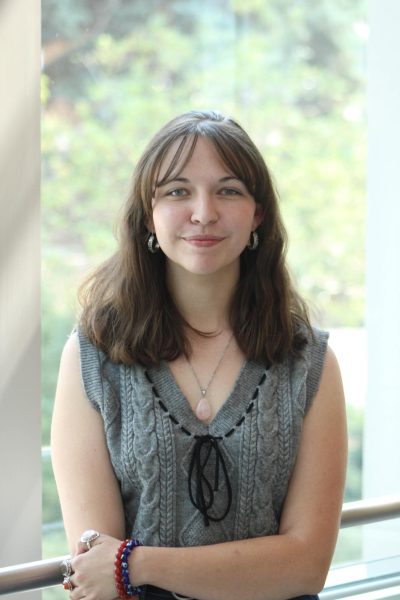A green Moroccan-style rug stands in for turf. A green bikini top represents a leaf in a canopy of trees. A melted soda bottle creates a translucent green flower.
This is not your typical recreation of a Florida swamp.
This is the scenic design for Weber State University’s latest theater production: “The Amphibians.”
This production is the world premiere of “The Amphibians,” written by playwright Dan Caffrey.
“The Amphibians” had its first weekend of performances in the Eccles Theater in the Browning Center on Feb. 23 and Feb. 24, and will run again Feb. 28 until March 1.
Sustainability takes center stage in the concepts of this production, both in the plot and in the set design.
Set in Florida 13 years in the future, Caffrey describes the play as following two high schoolers who have to navigate not only regular high school problems but also the threat of worsening climate conditions.
“Sustainability was always something we had in mind, and we wanted to produce a show with as much as we already had in stock,” Lily Hilden, student director of this production, said.
Light designer Kace Barthlome and scenic designer Porter Lance worked together to find ways to recreate a Florida forest as closely as possible with sustainable materials.
Lance said this set was different from others because usually they know what it’s going to look like beforehand. For this production, they needed to see what materials they could work with first.
“My goal was definitely to buy nothing that would be thrown away, and buy nothing that would not have a life either before or after our use,” Lance said.
Lance said he looked through the theater department’s stock, thrift stores and Facebook Marketplace to find the materials, including the rugs that line the floor of the set.
Other materials included were donated or brought by the crew.
Barthlome, who works as a hairstylist, said they brought some empty, green shampoo bottles from work that were going to be thrown out.
Green grocery bags were also used in the design, and the sustainability office on campus also helped collect green items, Barthlome said.
Lighting was worked into the scene design through light-up flowers and plants. Barthlome said that in order to get the lighting design right, they had to look into which plants are bioluminescent in nature, and which plants are native to Florida.
This resulted in optical fibers being molded into plants. Barthlome said they also put LED tape lights into pool noodles to create another type of plant. Fog and haze are used to resemble Florida’s humidity.
“It takes a little bit more time, a little more effort. But I think oftentimes, that’s a limitation that kind of builds more creativity, and I definitely want to be more conscious of that in the future and use that in future designs rather than just starting with something brand new,” Lance said.
The largest piece of this set design lies in the canopy of trees made out of thrifted green clothes. Cully Long, assistant professor of theater, said the crew found a Goodwill outlet in Salt Lake City that sold clothes by the pound.
“So we went down, we bought like 200 pounds of just green clothing that we’ve used to make the canopy,” Long said. “And it’s been attached up there in a way that it’s not being damaged. We can take it down.”
When the clothes do come down, some students already have claims on which articles they want to take with them. Hilden pointed out a striped button-up they had their eye on.
“When you look at it close up, it not only looks like an amazing forest. This was just built completely with materials that already existed,” Caffrey said. “You can do a show that looks expensive and epic in scope and visually stunning, using just everything that’s already around you.”
Caffrey is glad to see the students get excited about his play. He said he came up with the idea in 2012 when he began to discover how bad the climate crisis had become. Writing about it helped him work through the worries he was feeling. He started workshopping it while at grad school at the University of Texas Austin in 2017.
“I kept thinking, well, what would it be like to be a high schooler then, to have to navigate all the complexities of high school, including these close friendships that sometimes fall apart in the middle of having to worry about all these big global issues,” Caffrey said.
Caffrey said that one reason he’s excited is that while the students involved in the production are a few years older than the characters in the play, they may deal with some of the same feelings.
“It makes me feel like hopefully I’m speaking to them in some kind of way,” Caffrey said.
This very sentiment was reflected by Hilden, who has been working with this play for about a year now.
“The reason I selected the script in the first place is because I could relate to it in a lot of ways,” Hilden said. “How do we fix this? And what I related to in the show was this idea of like, ‘I’m just a teenager. How am I supposed to know what to do? And why does this fall on me?’”
Tickets for the show cost $10 for WSU students and $17 for adults. Youth tickets are $14, however a mature content warning is listed for language.


